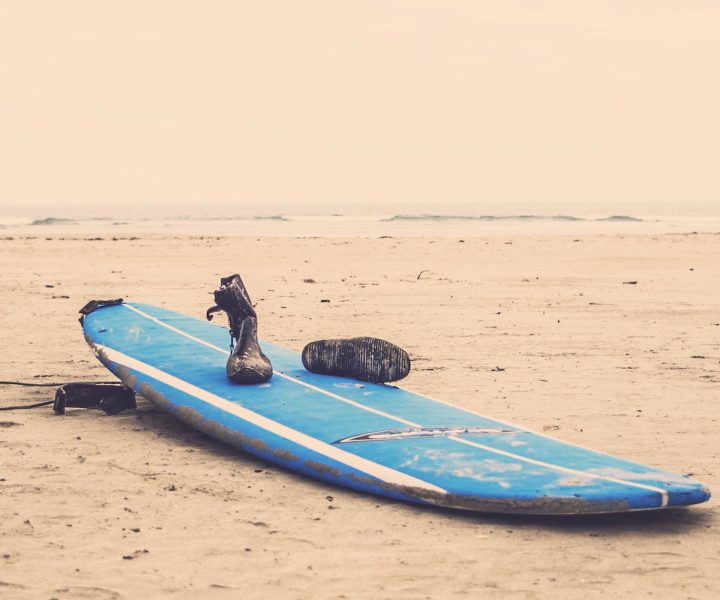
Why is waxing your surfboard so important? Well, the hard shell of your board is designed to be slippery, which is great for the side that goes into the water, but not so great for your feet.
Surfboard wax helps your feet stick to the board and stops your chest from slipping around when your paddling by providing a bit of grip and traction. If you’re going to surf, you need to wax your board. Here’s how to do it.
Choosing your wax
The first step is to choose a good wax. There are lots of brands out there, so you need to pick carefully, as the right wax can make all the difference. There are a couple of things you’ll need to take into account when choosing your wax; the temperature of the water and the size of the board.
The temperature will determine whether you need Cold, Cool, Warm, or Tropical wax. This bit’s important because if you choose the wrong one, you risk it melting off in warm waters or freezing in cold water, which will just make the board slippery again.
As for basecoat wax, you’ll need this harder wax if you’re waxing a new board or are putting a new coat on after stripping off old wax. What it does is create a surface that the top coat can stick to, which is particularly useful for cold or cool water wax. This will help the topcoat last much longer, so you don’t have to reapply as often.
Surfboard wax is made mainly from bee’s wax and paraffin, but you will find that some include other substances to add a bit of fragrance. However, as long as the wax creates bumps to give your feet something to grip to and is right for the water temperature, then that’s all that really matters.
Applying your wax
The first thing you should do is clean the board. Use a cloth to remove any dirt or debris to help the wax stick to the board better. Then, it’s time to apply the basecoat. Remember, this is harder wax, so you’re going to have to push down for it to rub off onto the board.
Start from where your back foot would be placed at the back of the board and work your way up to where you would place your front foot, and to where your chest would be. Avoid getting wax on the rails, so stay about an inch or two from the edges. A half a bar of wax is normally enough to cover this surface area.
There are different ways you can apply the wax, with the main idea being to apply broad strokes until you start to see a bump pattern emerge. Different techniques to try include Criss Cross, Circles, and Front to Back. Don’t be afraid to try a few different techniques until you find something that works for you.
Once you’ve got your basecoat on, you’ll need to apply the top coat. This one is easier to apply as it’s much softer and tackier. Apply in the same way you did the basecoat but using a little less pressure.
Keep applying your top coat before each surf session until it’s time for a new base coat. Typically, you can expect your basecoat to last a year, unless you surf loads, in which case you may need to reapply every three to four months.
 Your Privacy Choices
Your Privacy Choices